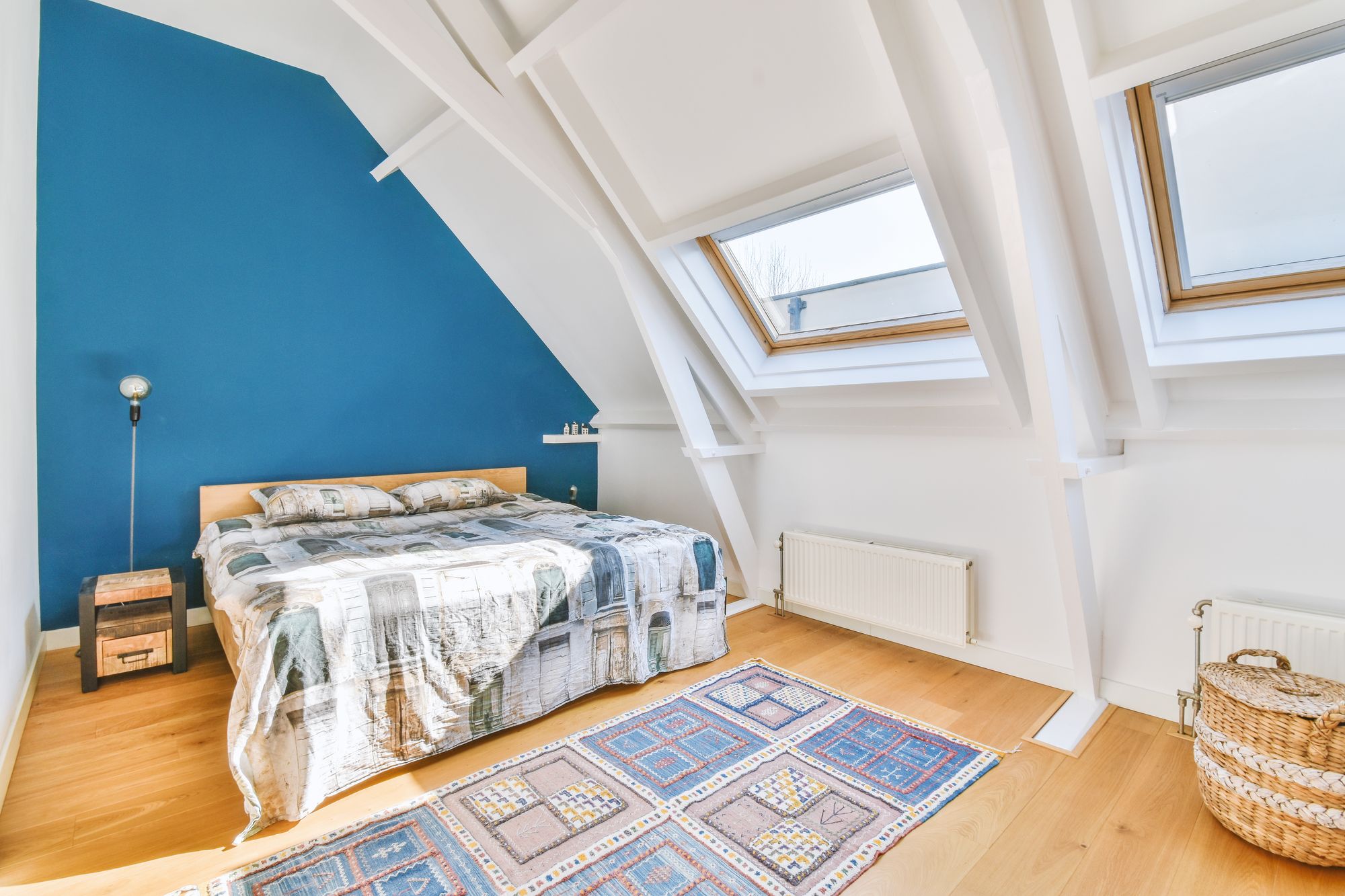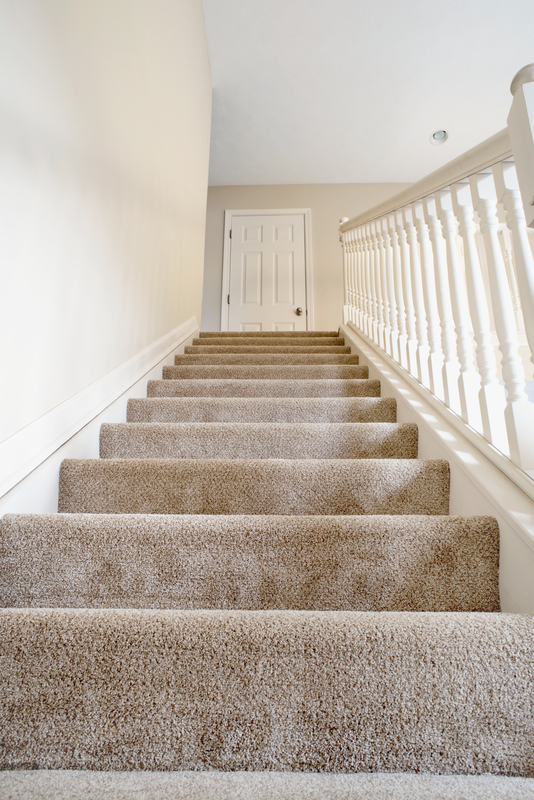How To Keep An Upstairs Room Cool In The Summer: Expert Tips
Keep an upstairs room cool by using blackout curtains and a ceiling fan. Also, ensure proper insulation and ventilation.
Summer heat can make upstairs rooms unbearably hot. To maintain comfort, focus on effective cooling strategies. Start with blackout curtains to block sunlight and reduce heat. Use a ceiling fan to circulate air and create a cooling effect. Proper insulation prevents heat from entering, while ventilation helps expel hot air.
Seal any gaps or cracks to stop warm air infiltration. Consider using a portable air conditioner or window AC unit for additional cooling. By combining these methods, you can keep your upstairs room pleasantly cool throughout the summer.

Credit: blog.constellation.com
Insulate Properly
During the summer, keeping an upstairs room cool can be challenging. One of the best strategies is to insulate properly. Proper insulation prevents hot air from entering and keeps cool air inside. Let’s dive into some effective methods.
Seal Windows And Doors
Windows and doors are common sources of heat. To keep your room cool, ensure these areas are sealed tight.
- Inspect window frames for gaps or cracks.
- Use caulk to fill any visible gaps.
- Install heavy-duty door sweeps on exterior doors.
Sealing these entry points will reduce heat flow and maintain a cool environment.
Use Weatherstripping
Weatherstripping is a simple and effective solution. It blocks the gaps around windows and doors.
- Measure the perimeter of doors and windows.
- Purchase weatherstripping material from a hardware store.
- Apply the weatherstripping around the edges where gaps are present.
This material acts as a barrier, preventing hot air from entering and cool air from escaping.
| Item | Description |
|---|---|
| Caulk | Fills gaps and cracks around windows. |
| Door Sweeps | Installed at the bottom of doors to seal gaps. |
| Weatherstripping | Blocks gaps around windows and doors. |
Using these methods, you can effectively insulate your upstairs room. This will keep it cool and comfortable during the summer months.
Opt For Light Colors
Keeping an upstairs room cool in the summer can be challenging. One effective strategy is to opt for light colors. Light colors reflect heat and light, making the room cooler.
Reflective Paint
Using reflective paint on walls and ceilings can help. Reflective paint bounces sunlight away. This reduces heat absorption. Choose light shades like white or pastel colors. These colors make the room look brighter and feel cooler.
Light-colored Furniture
Furniture plays a big role in room temperature. Opt for light-colored furniture to keep the room cool. Dark furniture absorbs heat. Light-colored furniture reflects it. Consider white, beige, or light gray options.
Here’s a quick comparison:
| Dark Furniture | Light-Colored Furniture |
|---|---|
| Absorbs heat | Reflects heat |
| Makes room warmer | Keeps room cooler |
| Feels heavy | Feels airy |
- Choose light-colored sofas.
- Opt for white or light wood tables.
- Use light-colored bed linens and curtains.
These changes can make a big difference. The room will feel cooler and more comfortable.
Install Ceiling Fans
Keeping an upstairs room cool during the summer can be a challenge. One effective way to combat the heat is to install ceiling fans. Ceiling fans help circulate air, creating a comfortable breeze. This can make a significant difference in the temperature of your room.
Fan Direction
Ceiling fans have a switch to change the direction of the blades. For summer, set the fan blades to spin counter-clockwise. This creates a wind-chill effect, making the room feel cooler. Check the fan’s manual to find the switch and adjust it accordingly.
Optimal Placement
Place the ceiling fan in the center of the room. This ensures even air distribution. For larger rooms, consider installing multiple ceiling fans. Each fan should be at least 8-9 feet above the floor. This height ensures safety and optimal air circulation.
| Room Size | Recommended Fan Size |
|---|---|
| Up to 75 sq. ft. | 29-36 inches |
| 76-144 sq. ft. | 36-42 inches |
| 145-225 sq. ft. | 44-50 inches |
| 226-400 sq. ft. | 50-54 inches |
- Choose the right fan size based on your room’s dimensions.
- Ensure proper installation for maximum efficiency and safety.
- Use energy-efficient fans to save on electricity bills.
Use Window Treatments
Keeping an upstairs room cool in the summer can be challenging. One effective method is to use window treatments. Window treatments can block out the sun and keep the heat out. Below are some types of window treatments that can help.
Blackout Curtains
Blackout curtains are thick and heavy. They block out almost all sunlight. This keeps your room dark and cool. These curtains are available in various colors and styles. Installing blackout curtains is easy. You can find them in most home improvement stores.
Here are some benefits of blackout curtains:
- They block out light.
- They keep the room cool.
- They reduce noise from outside.
- They add privacy to your room.
Reflective Blinds
Reflective blinds are another great option. These blinds have a reflective coating. This coating bounces sunlight back outside. Reflective blinds come in different styles and sizes. They are perfect for reducing heat in your room.
Consider these advantages of reflective blinds:
- They reflect sunlight.
- They reduce heat buildup.
- They are easy to install.
- They enhance room aesthetics.
| Feature | Blackout Curtains | Reflective Blinds |
|---|---|---|
| Sunlight Blocking | High | Medium |
| Heat Reduction | High | High |
| Noise Reduction | High | Low |
| Installation | Easy | Easy |
Limit Heat-producing Activities
Keeping an upstairs room cool during summer can be challenging. One effective strategy is to limit heat-producing activities. Reducing these activities helps in maintaining a cooler environment. Below are some tips to achieve this.
Cook Outdoors
Cooking indoors generates significant heat. This heat makes your upstairs room warmer. Consider cooking outside on a grill. This keeps the heat outside and your home cool. You can also use a slow cooker outside. It’s a great way to prepare meals without heating your home.
Energy-efficient Appliances
Use energy-efficient appliances to reduce heat production. Energy-efficient appliances emit less heat. They also use less electricity, saving you money. Look for appliances with the Energy Star label. These are designed to be more efficient and produce less heat.
Here is a table of common appliances and their energy-efficient alternatives:
| Appliance | Energy-Efficient Alternative |
|---|---|
| Traditional Oven | Convection Oven |
| Standard Light Bulbs | LED Light Bulbs |
| Old Refrigerators | Energy Star Refrigerators |
Using these alternatives can help keep your upstairs room cool. They produce less heat and are more efficient.
Unplug Unused Electronics
Electronics generate heat even when not in use. Unplug devices when they are off. This helps in reducing heat in the room. It also saves energy, making your home more efficient.

Credit: evapolar.com
Ventilation Strategies
Keeping an upstairs room cool in the summer can be challenging. Proper ventilation can help. Here are some strategies to improve airflow and reduce heat.
Cross Ventilation
Cross ventilation involves opening windows on opposite walls. This creates a breeze through the room. The air flows in one window and out the other. This method works best during cooler parts of the day.
- Open windows on opposite sides of the room.
- Use doorways to allow air to flow freely.
- Ensure no large furniture blocks the airflow.
Exhaust Fans
Exhaust fans are effective at removing hot air. They can be installed in the ceiling or walls. These fans pull hot air out of the room, replacing it with cooler air.
| Type of Fan | Location | Best Use |
|---|---|---|
| Window Fan | Mounted in window | Pulls in cool air or pushes out hot air |
| Ceiling Fan | Mounted on ceiling | Circulates air within the room |
| Wall Fan | Mounted on wall | Extracts hot air from the room |
Utilize Air Conditioning
Keeping an upstairs room cool during the summer is essential. One effective way is to utilize air conditioning. There are different types of air conditioning units to consider. Each has its own advantages. Let’s explore how you can use them to keep your room cool.
Portable Units
Portable air conditioning units are flexible and easy to install. They can be moved from room to room. This feature makes them ideal for cooling an upstairs space. Portable units require a window for the exhaust hose. Make sure the hose is properly installed to prevent hot air from coming back inside.
These units often come with wheels. You can easily move them as needed. They also have built-in dehumidifiers. This helps remove excess moisture from the air. Some models even come with remote controls. You can adjust settings without getting up.
Central Air Systems
Central air systems cool the entire house. They provide a consistent and even temperature. This system uses ducts to circulate cool air. If your home already has ducts, installing central air is easier. Central air systems are more energy-efficient than portable units.
These systems are usually controlled by a thermostat. Set the thermostat to a comfortable temperature. This ensures your upstairs room stays cool. Regular maintenance is important. Clean or replace the filters every month. This keeps the system running efficiently.
| Type | Pros | Cons |
|---|---|---|
| Portable Units |
|
|
| Central Air Systems |
|
|
Landscaping Solutions
Keeping an upstairs room cool in the summer can be challenging. Landscaping solutions offer natural ways to reduce heat. The right landscaping can make a significant difference. Let’s explore how shade trees and green roofs can help.
Shade Trees
Shade trees are a natural cooling solution. Planting trees around your home can block sunlight. Trees reduce the temperature by providing shade. Choose trees that grow quickly and have a large canopy. Popular choices include:
- Maple Trees: Fast-growing and provide excellent shade.
- Oak Trees: Long-lasting and provide broad coverage.
- Birch Trees: Attractive and grow quickly.
Plant trees on the south and west sides of your home. This placement blocks the hottest afternoon sun. Trees also improve air quality and add beauty to your yard.
Green Roofs
Green roofs are another effective way to keep your upstairs room cool. A green roof is covered with plants and soil. It acts as an insulation layer. This reduces the amount of heat entering the home. Benefits of green roofs include:
| Benefit | Description |
|---|---|
| Cooling | Reduces heat absorption by the roof. |
| Insulation | Provides an extra layer of insulation. |
| Eco-friendly | Promotes biodiversity and reduces carbon footprint. |
Green roofs also absorb rainwater, reducing runoff. They provide habitats for birds and insects. Ensure the structure of your home can support the weight of a green roof. Consult with professionals before installation.

Credit: yellowbluetech.com
Frequently Asked Questions
How Do I Keep My Upstairs From Getting Hot In The Summer?
To keep your upstairs cool, use fans and close blinds during the day. Seal gaps and ensure proper insulation. Install an attic fan and consider using a programmable thermostat. Regularly service your HVAC system.
How To Cool Upstairs Without Ac?
Use fans to circulate air. Open windows at night. Close blinds during the day. Install attic insulation. Use heat-blocking curtains.
How Can I Cool My Top Floor Room In Summer?
Install ceiling fans and use blackout curtains. Apply window film to reduce heat. Insulate the attic. Use portable air conditioners. Ventilate with exhaust fans.
Conclusion
Keeping an upstairs room cool in the summer is achievable with smart strategies. Use fans, blackout curtains, and proper insulation. Regular maintenance of your HVAC system is crucial. Simple changes can make a big difference in comfort. Stay cool and enjoy a more pleasant summer indoors.






